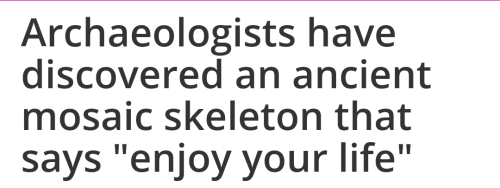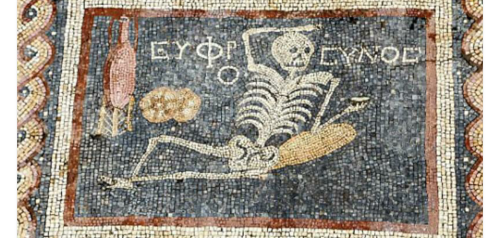Qatar National Library By OMA










Qatar National Library by OMA
The Library by Rem Koolhaas
The physical impact of books has been important in terms of my entire formation. The first books that fascinated me were the fairy tales of Grim illustrated by Gustave Doré. I still remember the physical nature of those books as one of the strongest memories of my entire life. In the 1950s I would spend time in the library of the Stedelijk Museum – almost like in a living room. My first intersection of writing and architecture was Delirious New York, which I wrote in the New York Public Library, going through microfilms, old newspapers, and books. I made one particular seat my own, almost day and night.
One similarity between architecture and bookmaking is that both have unbelievably long traditions but are also forced to be of the moment, constantly updating in order to survive. We have designed many libraries and built a few. Libraries, as a typology, are so exceptionally suitable to produce radical architecture. Apparently, there is a paradox that such a traditional form produces inventive solutions, and that is the case for the Qatar National Library. The building is 138 meters long, equivalent to the length of two 747s. This is not to boast about scale but because from the beginning the idea was to make reading as accessible and as stimulating as possible to the population of Qatar as a whole. We thought we could achieve that by creating a building that was almost a single room, not divided in different sections, certainly not into separate floors.
We took a plate and folded its corners up to create terraces for the books, but also to enable access in the center of the room. You emerge immediately surrounded by literally every book – all physically present, visible, and accessible, without any particular effort. The library is a space that could contain an entire population, and also an entire population of books…
More Posts from In-pursuit-of-knowledge-blog and Others
This Medieval Italian Man Replaced His Amputated Hand With a Weapon

Archaeologists have found a fascinating puzzle in the shape of a man’s remains dating back to medieval Italy. It looks like this guy went through life with a knife attached to his arm, in place of his amputated hand.
The skeleton in question was found in a Longobard necropolis in the north of Italy, dating back to around the 6th to 8th centuries CE. Hundreds of skeletons were buried there, as well as a headless horse and several greyhounds, but this particular skeleton stood out.
He was an older male, aged between 40 and 50, and his right arm had been amputated around the mid-forearm.
The researchers, led by archaeologist Ileana Micarelli of Sapienza University in Rome, determined that the hand had been removed by blunt force trauma, but exactly how or why is impossible to tell. Read more.
"When Shelley's corpse washed ashore, a friend identified it by a copy of Keats's 1820 volume in the coat pocket, which he knew Shelley had taken with him. Then, after cremation in which Shelley's heart, hardened by calcium, did not burn, this same friend snatched it from the embers and presented it to Mary Shelley, who kept it thereafter in her desk, wrapped in a copy of 'Adonais."
Here’s your morbid literary fact of the day.

When you’re an umbrella jelly but you can never be dry 😓
But they never stop trying 💪

https://www.instagram.com/thepersonalquotes/
aren’t you two from the same mountain range?
Like if 60 degrees is Far Too Hot
reblog if you want to fight me about it
this is so rare!!! and it’s not albino, because its eyes are the usual color instead of pinkish- it’s the same gene that gives some moose white spots!
Nature spirit.
Yo!!!!!!
Super blue blood moon rises behind Parthenon, in Athens January 2018
-
 eternalhappiness liked this · 7 months ago
eternalhappiness liked this · 7 months ago -
 peacockfire reblogged this · 7 months ago
peacockfire reblogged this · 7 months ago -
 serbridford reblogged this · 7 months ago
serbridford reblogged this · 7 months ago -
 fairhopeman liked this · 1 year ago
fairhopeman liked this · 1 year ago -
 kittybluntzz liked this · 1 year ago
kittybluntzz liked this · 1 year ago -
 kobithedragon liked this · 1 year ago
kobithedragon liked this · 1 year ago -
 mastersseekmasters reblogged this · 2 years ago
mastersseekmasters reblogged this · 2 years ago -
 bjavonphotos liked this · 2 years ago
bjavonphotos liked this · 2 years ago -
 morikendes liked this · 2 years ago
morikendes liked this · 2 years ago -
 elitesque reblogged this · 3 years ago
elitesque reblogged this · 3 years ago -
 warningsine reblogged this · 4 years ago
warningsine reblogged this · 4 years ago -
 kaifyer reblogged this · 4 years ago
kaifyer reblogged this · 4 years ago -
 stormphoenix reblogged this · 4 years ago
stormphoenix reblogged this · 4 years ago -
 spliffany-deactiv reblogged this · 4 years ago
spliffany-deactiv reblogged this · 4 years ago -
 cimiim reblogged this · 4 years ago
cimiim reblogged this · 4 years ago -
 nofunn liked this · 5 years ago
nofunn liked this · 5 years ago -
 oh-caoticabelleza liked this · 5 years ago
oh-caoticabelleza liked this · 5 years ago -
 calvinization reblogged this · 5 years ago
calvinization reblogged this · 5 years ago -
 calvinization liked this · 5 years ago
calvinization liked this · 5 years ago -
 asgoodasitgetsblog reblogged this · 5 years ago
asgoodasitgetsblog reblogged this · 5 years ago -
 asgoodasitgetsblog liked this · 5 years ago
asgoodasitgetsblog liked this · 5 years ago -
 jits-posts liked this · 5 years ago
jits-posts liked this · 5 years ago -
 froggerty liked this · 5 years ago
froggerty liked this · 5 years ago -
 poncho-honcho reblogged this · 5 years ago
poncho-honcho reblogged this · 5 years ago -
 poncho-honcho liked this · 5 years ago
poncho-honcho liked this · 5 years ago
Once I was made of stardust. Now I am made of flesh and I can experience our agreed-upon reality and said reality is exciting and beautiful and terrifying and full of interesting things to compile on a blog! / 27 / ENTP / they-them / Divination Wizard / B.E.y.O.N.D. department of Research and Development / scientist / science enthusiast / [fantasyd20 character]
162 posts






